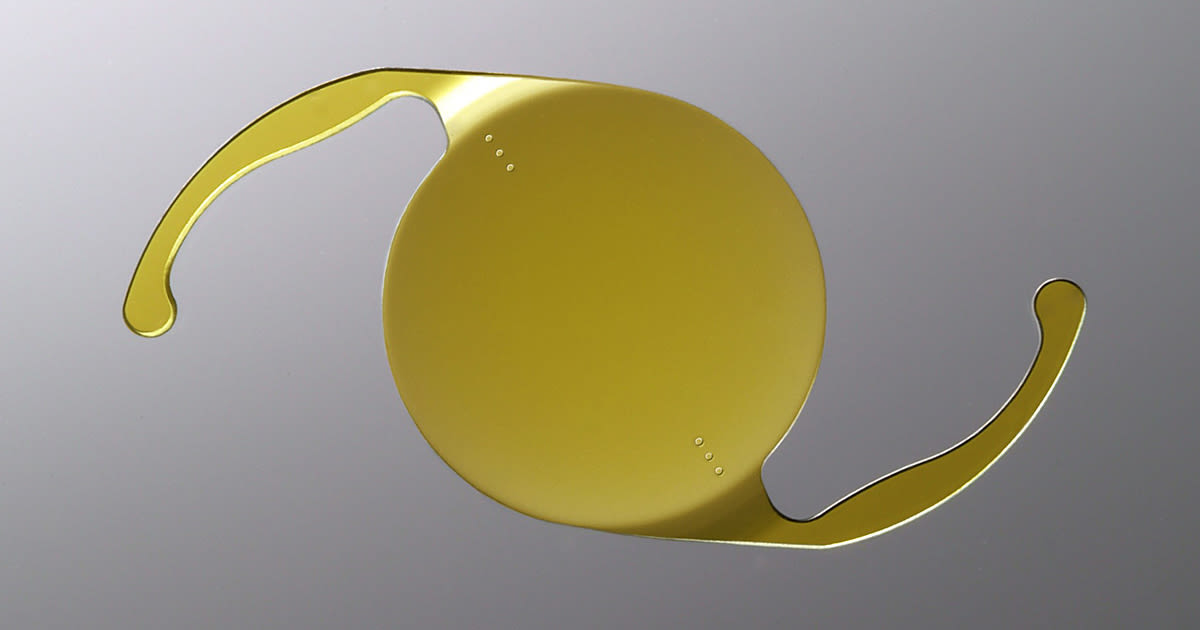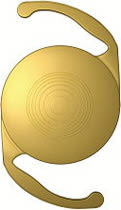Multifocal intraocular lenses: ReSTOR and Tecnis multifocal IOL

If you need cataract surgery and you want the greatest freedom from eyeglasses after surgery, you might want to consider multifocal intraocular lenses (IOLs) to expand your range of clear vision.
In the past, the primary goal of cataract surgery was to restore a person's vision for driving, watching television, and other distance vision tasks. To see clearly up close, a person would need to wear bifocals or reading glasses after cataract removal to correct the inevitable post-surgical presbyopia.
But today, cataract patients have the choice of multifocal IOLs that can correct vision far away, up close and all distances in between.
These advanced presbyopia-correcting IOLs are in many ways similar to bifocal and multifocal contact lenses. And because multifocal IOLs are implanted inside the eye, they don't require any care and routine replacement like contact lenses do.
Many patients who choose multifocal intraocular lenses find they can be glasses-free or may only need reading glasses occasionally for reading small print after cataract surgery.
Currently, there are two commonly used multifocal IOLs that are FDA approved and available for cataract surgery performed in the United States: AcrySof IQ ReSTOR and Tecnis Multifocal IOL.
AcrySof IQ ReSTOR
AcrySof IQ ReSTOR multifocal IOLs, marketed by Alcon, have been approved for use in the U.S. since 2005.

AcrySof IQ ReSTOR multifocal IOL.
These multifocal lens implants feature a patented "apodized diffractive" design that optimally distributes light to distance, intermediate and near focal points, depending on the amount of ambient light available. This optimizes image quality in all lighting conditions, according to Alcon.
For example, in low-light conditions, as the pupil dilates, more light is distributed to elements in the lens required for clear distance vision. This improves a driver's vision of the road ahead at night, the company says. But this also means near vision may not be as crisp with the ReSTOR lens in low light as it is in bright light conditions.
AcrySof IQ ReSTOR multifocal IOLs also feature aspheric optics to reduce a specific type of higher-order aberration called spherical aberration. This reduces halos around lights at night and improves image quality for enhanced visual clarity, the company says.
More than 93 percent of people who have had AcrySof IQ ReSTOR multifocal IOLs implanted in their eyes during cataract surgery have said they would do it again, according to Alcon.
Tecnis Multifocal IOL
The Tecnis Multifocal IOL, marketed by Abbott Medical Optics (AMO), has been approved for use in the U.S. since 2009.

Tecnis Multifocal IOL.
The fully diffractive surface of the Tecnis Multifocal IOL provides advanced image quality at all distances under any lighting conditions and regardless of pupil size, according to AMO.
Nearly 9 out of 10 people who have had Tecnis Multifocal IOLs implanted in their eyes enjoy freedom from eyeglasses after cataract surgery, the company says.
Mixing Multifocal IOLs And Monofocal IOLs
Instead of using the same multifocal IOL in both eyes, your cataract surgeon might recommend using a different type of multifocal IOL in each eye, or maybe even a multifocal IOL in one eye and a standard monofocal IOL in the other eye.
Why?
Each person has specific visual needs and concerns, and each type of IOL has its own set of benefits and limitations. An experienced cataract surgeon can help you choose the best combination of lens implants to match your individual needs — including helping you decide if mixing multifocal IOLs is a good option for you.
For example, you might do a lot of driving at night and your distance vision is your primary concern. But you may also like to be less dependent on reading glasses than you would be if you had standard monofocal IOLs implanted in both eyes.
In this case, your surgeon might recommend a monofocal IOL in your dominant eye to give you the best possible distance vision in that eye, and a multifocal IOL in your non-dominant eye to give you a little help at the computer or up close so you are less dependent on computer glasses or reading glasses.
Another option is to use a multifocal IOL in one eye, and another type of presbyopia-correcting IOL called a Crystalens accommodating IOL in the other eye to take advantage of the unique benefits of each of these premium IOLs to expand your range of clear vision without glasses.
Still another option is to use monofocal IOLs in such a way to provide a monovision correction with cataract surgery, similar to monovision with contact lenses.
Your eye doctor and/or cataract surgeon can discuss the pros and cons of each of these options during your preoperative exam and cataract surgery consultation.
Are You A Good Candidate For Multifocal IOLs?
Perhaps the most important factor in determining if you are a good candidate for multifocal IOLs is your willingness to accept some compromise in the clarity of your distance vision for the convenience of being less dependent on computer glasses and/or reading glasses after cataract surgery.
If you're not willing to accept this type of compromise, or your occupation requires that you have the best possible distance vision at all times or excellent night vision — for example, if you are a pilot or someone who spends a lot of time driving in unfamiliar areas at night — then you probably are not a good candidate for multifocal IOLs. You may be better served with standard monofocal IOLs for optimal distance vision — even though this means you will need bifocals, progressive lenses or reading glasses to see clearly up close.
Also, if you have a pre-existing visual condition other than cataracts that affects your vision in one or both eyes (macular degeneration, for example), you typically will be happier with standard monofocal IOLs rather than multifocal IOLs, which require good visual capability in both eyes for best results.
Your eye doctor and/or cataract surgeon can evaluate the health of your eyes during your comprehensive eye exam prior to surgery to determine if you have any non-cataract-related eye problems that may affect your vision after cataract surgery.
[Learn why an AllAboutVision.com editorial board member and former cataract surgeon decided against presbyopia-correcting IOLs for his own cataract procedure.]
Multifocal IOL Costs
For the best visual outcomes with multifocal IOLs, the exact placement of the lens inside the eye is critical — even more critical than when a standard monofocal IOL is used.
For this reason, if you choose to go with a multifocal IOL, your cataract surgeon may recommend that you also opt for a laser cataract surgery procedure. Use of a femtosecond laser during certain steps in cataract surgery can help your surgeon better position the multifocal IOL to take full advantage of the design of the lens for optimal vision at all distances.
Upgrading to a laser-assisted procedure will likely increase your overall cost of cataract surgery. Your eye doctor and/or cataract surgeon can advise you of these costs during your preoperative eye exam and surgical consultation.
It's also important to understand that Medicare and most vision insurance plans generally will only cover the cost of standard monofocal intraocular lenses used in cataract surgery.
If you choose to upgrade to a multifocal intraocular lens or other presbyopia-correcting IOL, you will need to pay the extra costs associated with these premium lenses with your own money.
This added "out-of-pocket" expense for advanced cataract surgery with multifocal IOLs can range from $1,500 to $4,000. Your cataract surgeon can advise you of the exact amount during your preoperative exam and consultation.
Page published on Wednesday, February 27, 2019






